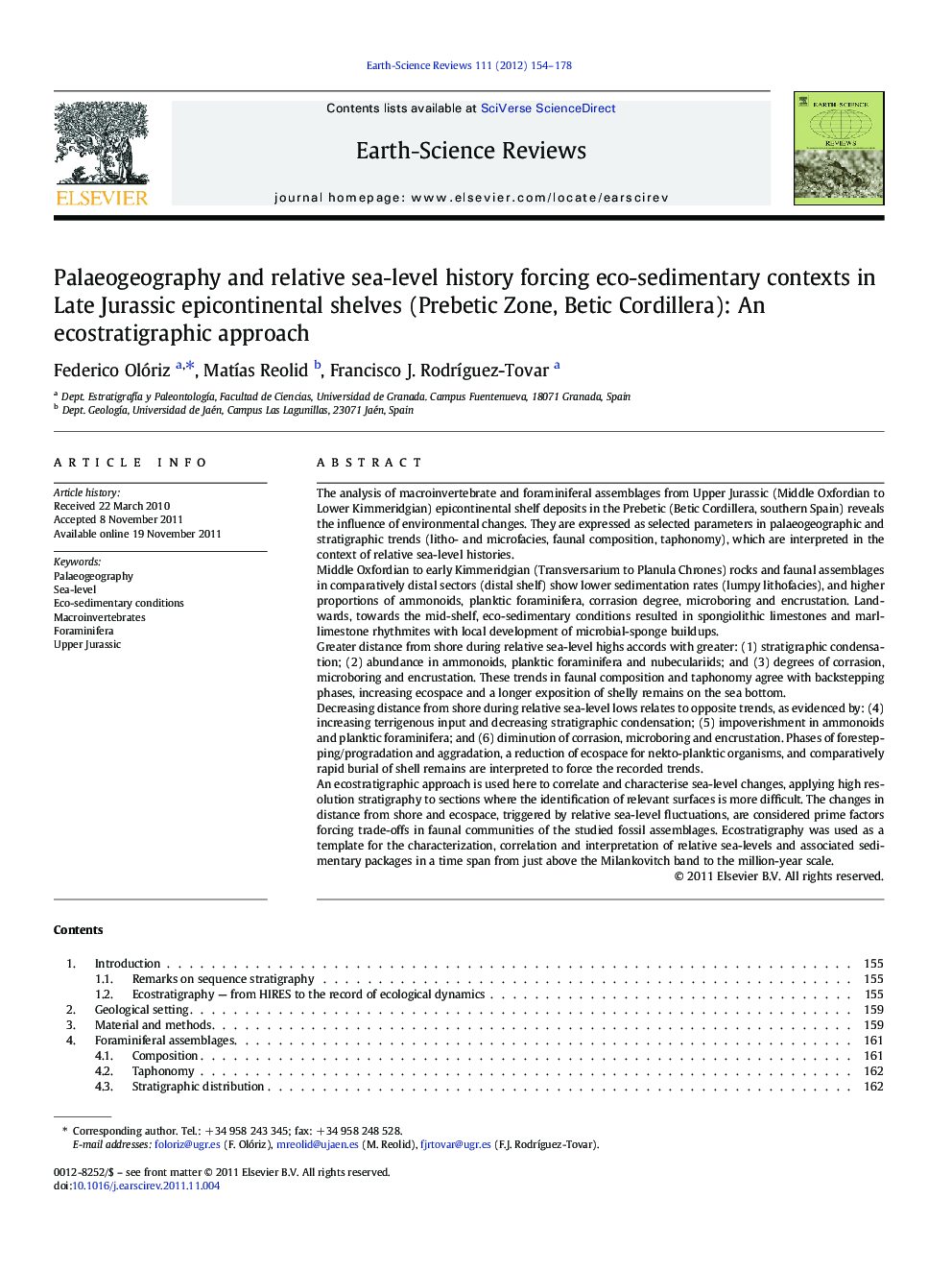| Article ID | Journal | Published Year | Pages | File Type |
|---|---|---|---|---|
| 4725983 | Earth-Science Reviews | 2012 | 25 Pages |
The analysis of macroinvertebrate and foraminiferal assemblages from Upper Jurassic (Middle Oxfordian to Lower Kimmeridgian) epicontinental shelf deposits in the Prebetic (Betic Cordillera, southern Spain) reveals the influence of environmental changes. They are expressed as selected parameters in palaeogeographic and stratigraphic trends (litho- and microfacies, faunal composition, taphonomy), which are interpreted in the context of relative sea-level histories.Middle Oxfordian to early Kimmeridgian (Transversarium to Planula Chrones) rocks and faunal assemblages in comparatively distal sectors (distal shelf) show lower sedimentation rates (lumpy lithofacies), and higher proportions of ammonoids, planktic foraminifera, corrasion degree, microboring and encrustation. Landwards, towards the mid-shelf, eco-sedimentary conditions resulted in spongiolithic limestones and marl-limestone rhythmites with local development of microbial-sponge buildups.Greater distance from shore during relative sea-level highs accords with greater: (1) stratigraphic condensation; (2) abundance in ammonoids, planktic foraminifera and nubeculariids; and (3) degrees of corrasion, microboring and encrustation. These trends in faunal composition and taphonomy agree with backstepping phases, increasing ecospace and a longer exposition of shelly remains on the sea bottom.Decreasing distance from shore during relative sea-level lows relates to opposite trends, as evidenced by: (4) increasing terrigenous input and decreasing stratigraphic condensation; (5) impoverishment in ammonoids and planktic foraminifera; and (6) diminution of corrasion, microboring and encrustation. Phases of forestepping/progradation and aggradation, a reduction of ecospace for nekto-planktic organisms, and comparatively rapid burial of shell remains are interpreted to force the recorded trends.An ecostratigraphic approach is used here to correlate and characterise sea-level changes, applying high resolution stratigraphy to sections where the identification of relevant surfaces is more difficult. The changes in distance from shore and ecospace, triggered by relative sea-level fluctuations, are considered prime factors forcing trade-offs in faunal communities of the studied fossil assemblages. Ecostratigraphy was used as a template for the characterization, correlation and interpretation of relative sea-levels and associated sedimentary packages in a time span from just above the Milankovitch band to the million-year scale.
